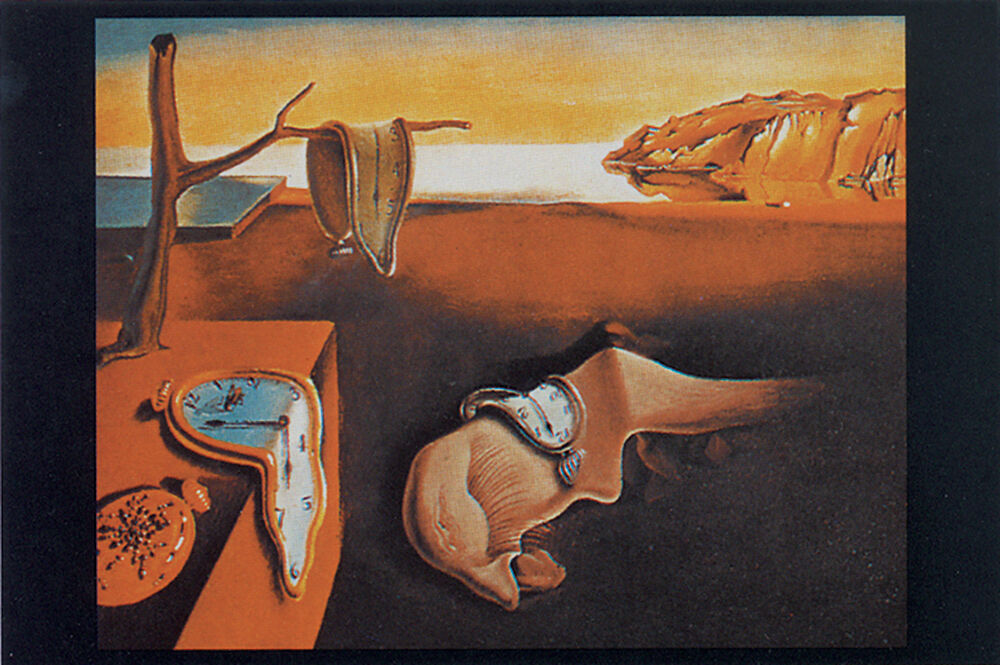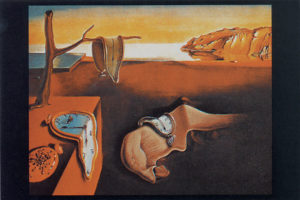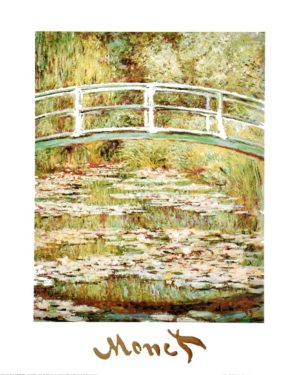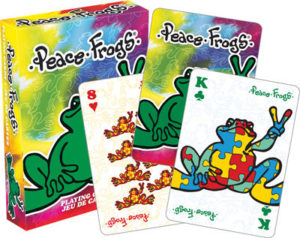Hard objects become inexplicably limp in this bleak and infinite dreamscape, while metal attracts ants like rotting flesh. Mastering what he called “the usual paralyzing tricks of eye-fooling,” Dalí painted with “the most imperialist fury of precision,” he said, but only “to systematize confusion and thus to help discredit completely the world of reality.” It is the classic Surrealist ambition, yet some literal reality is included, too: the distant golden cliffs are the coast of Catalonia, Dalí’s home.
Those limp watches are as soft as overripe cheese—indeed, they picture “the camembert of time,” in Dalí’s phrase. Here time must lose all meaning. Permanence goes with it: ants, a common theme in Dalí’s work, represent decay, particularly when they attack a gold watch, and they seem grotesquely organic. The monstrous fleshy creature draped across the painting’s center is at once alien and familiar: an approximation of Dalí’s own face in profile, its long eyelashes seem disturbingly insect-like or even sexual, as does what may or may not be a tongue oozing from its nose like a fat snail.
The year before this picture was painted, Dalí formulated his “paranoiac-critical method,” cultivating self-induced psychotic hallucinations in order to create art. “The difference between a madman and me,” he said, “is that I am not mad.”
SOURCE
Product Description
Before joining the Surrealist group formally in 1929, Salvador Dali imbued his work with a sense of the fantastic and the extraordinary, personified in the work of the Old Masters such as Hieronymus Bosch and in his own time by Giorgio de Chirico. In The Persistence of Memory, one of his earlier Surrealist works, Dali was influenced by Bosch’s Garden of Earthly Delights, which he combined with a Catalan background, a feature of much of his early work. This painting was one of the first Dali executed using his ‘paranoid critical’ approach in which he depicts his own psychological conflicts and phobias. Dali had studied psychoanalysis and the works of Sigmund Freud before joining the Surrealists. The faithful transcription of dreams has always played a major role in Dali’s paintings. To dream is easy for him because of his Mediterranean heritage. A siesta, to him, has always opened the doors of a pre-sleep period, the instant when one forgets the presence of one’s body. Dali’s demonology owes a great deal to his reveries. They have given birth to heterogeneous elements which he then brings together in his paintings without always knowing why. In the works of the Surrealist period, Dali treated those elements of disparate appearance with absolute realism which emphasized the proper character of each one of them, making an exact copy from a document, a photograph, or the actual object, as well as using collage. The Persistence of Memory contains a self-portrait over which is draped a ‘soft watch’. For Dali, these ‘soft watches’ represent what he called the ‘camembert of time’, suggesting that the concept of time had lost all meaning in the unconscious world. The ants crawling over the pocket watch suggest decoy, an absurd notion given that the watch is metallic. These ‘paranoid critical’ images reflect Dali’s reading and absorption of Freud’s theories of the unconscious and its access to the latent desires and paranoia of the human mind, such as the unconscious fear of death alluded to in this painting.
SOURCE: dalipaintings.com
SOURCE: dalipaintings.com




